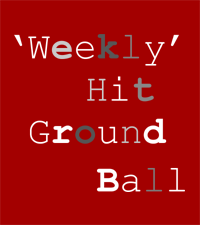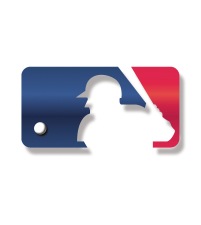 Much as I enjoy all the news and rumours that the offseason ‘Hot Stove’ brings, there’s a certain joy in knowing this is the last column I’ll be writing for just over eight months that is not influenced by actual games being played.
Much as I enjoy all the news and rumours that the offseason ‘Hot Stove’ brings, there’s a certain joy in knowing this is the last column I’ll be writing for just over eight months that is not influenced by actual games being played.
The Spring Training leagues begin on Wednesday. These are the main stories of the week or so leading up to umpires shouting ‘play ball’ once again.
O’s2
Baltimore Orioles fans had sat through the majority of the offseason waiting for their team to do something to give them hope for the season ahead.
That hope may have been about to run out before the O’s revealed their London Bus approach to the free agent market: waiting around for ages and then signing two at once.
Baltimore, like every team, was keen to add a starting pitcher and they did so in the form of Ubaldo Jimenez on a four-year, $50m contract.
Jimenez is an enigmatic player, switching between ‘Ubaldo the Magnificent’ and ‘Ubaldo the Mess’ like a change in the weather. Scouts explain that his complicated pitching mechanics make him more susceptible to ‘losing’ his delivery, as you sometimes see with cricket bowlers (England’s Stephen Finn would be a good recent example). When a pitcher struggles to repeat his delivery, he struggles to put the ball where he wants to and the result is walks and ‘hit me’ pitches.
Jimenez is a quality pitcher when everything is in synch, such as during his 19-8 season with the Colorado Rockies in 2010 and last year with the Cleveland Indians. It’s unlikely, although far from impossible, that the Orioles will receive four consecutive seasons of Jimenez at his best, but one such season along with three decent ones would still make for a good return on their relatively modest $50m investment.
Jimenez was one of the group of players still on the free agent market in part because signing them involved giving up a valuable amateur draft pick. Nelson Cruz was also on that list until he agreed a one-year deal worth $8m with Baltimore and it’s no coincidence that the Orioles doubled-up on their free agent signings. Having already lost their 2014 draft first round pick due to signing Jimenez, Cruz will only cost Baltimore their less-valuable second round selection. He is slated to be the team’s Designated Hitter this season.
Bailey bonanza
The Cincinnati Reds signed pitcher Homer Bailey to a six-year, $105m contract extension this week (roughly an average of £202k per week).
Bailey was drafted out of High School by the Reds in 2004 and he has come through some growing pains since making his Major League debut as a 21 year old in 2007. The past two seasons, both of which included him pitching a no-hitter, have seen the big Texan develop into the quality starting pitcher that the Reds always believed he could become.
You could argue that he’s not quite an ace, even factoring in that his home ballpark is hitter-friendly (his career ERA is a full run less on the road than it is at the Great American Ballpark – 3.73 compared with 4.74), but if so then he’s at least very close to being one.
Last season he was 24th among pitchers in the Majors with his combined performances measured at 3.7 Wins Above Replacement (WAR), as per Fangraphs, a mark that put him 10th in the National League and second on his club behind Mat Latos (4.4 WAR).
Securing his services for the next six seasons at what is, based on the current market, a sensible annual cost is a good piece of work from the Reds, made all the more welcome due to it coming in an offseason where the team has been relatively quiet.
Add Bailey to the list that’s no longer on the list
As noted by ESPN.com’s David Schoenfield, Bailey is the latest player to be taken off the potential free agent list as part of a growing trend in which teams are signing their key players to contract extensions.
The most positive part of this development is that, as in the case of Cincinnati, it’s not just the clubs with the biggest pockets that are able to do this now.
The Reds’ 10-year, $225m contract with first baseman Joey Votto, signed in April 2012 and coming into effect from this season onwards, was the most significant deal so far in that regard, alongside the eight-year, $184m contract that the Minnesota Twins agreed with Joe Mauer in 2011.
Thanks to rising national and local TV contracts, even teams outside of the leading media markets such as New York and Los Angeles have a chance of funding contracts that allow them to keep hold of at least some of their best players. That can make the free agent market a bit less exciting, but few fans will mind this if it means that there’s a better chance that their favourite players are not inevitably going to be snapped up by the big boys.
Braves keeping hold of their own
The Atlanta Braves are yet another example of this trend. They followed up their contract extensions with Freddie Freeman (six-years, $135m) and Julio Teheran (six-years, $32.4m) this week with a four-year, $42m contract with closer Craig Kimbrel and a seven-year, $58m contract with shortstop Andrelton Simmons,.
The performance value of a closer is always hotly debated when weighing up the amount of innings they pitch (including the postseason, Kimbrel has averaged 70 innings per season over the past three years) against their perceived importance and the fact that reliable outstanding closers are a very rare breed.
Kimbrel has been so dominant in the role that the Braves’ desire to keep hold of him is understandable, although the ever-present fear of a year lost to Tommy John surgery will make it more important than normal to wait and see if it was money well spent once the contract comes to an end.
As for Simmons, watching him play shortstop is one of the delights of the game and if he can at least hold his own at the plate, Braves fans will be delighted to have him on their team for years to come.
Greinke the Grouch
Finally, Spring Training will have a different feel to it this year for the Arizona Diamondbacks and Los Angeles Dodgers as they head over to Australia for two regular season games on 22-23 March.
The Dodgers’ Zack Greinke is not greatly enthused by the prospect, stating to ESPNLosAngeles.com “I would say there is absolutely zero excitement for it … there just isn’t any excitement to it. I can’t think of one reason to be excited for itâ€.
Hopefully he’ll enjoy it when he gets there.


